 Facebook
Facebook
 X
X
 Instagram
Instagram
 TikTok
TikTok
 Youtube
Youtube
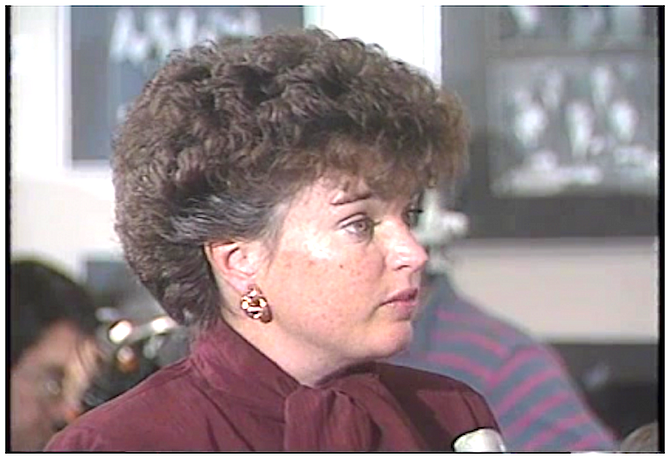
DESPITE LEGAL RESTRICTIONS or bans in all states but Arizona, Oklahoma, New Mexico, and Louisiana, cockfighting “has never been bigger,” according to HSUS [Humane Society of the United States] investigator Eric Sakach. An estimated 1,000 people breed fighting cocks in San Diego County, Calif., alone.
“News Shorts” The Animals' Agenda May 1991
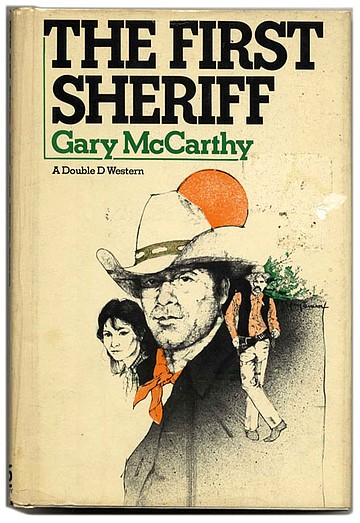
THE LIGHT HURRIED ACROSS the town and Glen Collins saw the spreading Pacific Ocean, the sailing ships in the port.
He took a deep breath and stretched the morning’s chill from his muscles. San Diego would be a great city someday. And maybe, if he won the election and became its first sheriff, he could do his part to see that it became the kind of place where folks would stay and raise their families with pride. It would never be a rip-roaring railhead city like Dodge or Abilene. He’d seen those places and they offered no appeal. Those towns would blossom and die before they’d even lived. But here it was different; San Diego was already a hundred years old and founded by Junipero Serra as the Mother Mission of California — San Diego de Alcala. It had grown very slowly, but now, after a century, what was left was good and Collins knew that it was here he would plant his roots....
And now, only a month before the election, Hap was teaching him how to handle a six-gun. Getting elected was going to be easier than staying alive. San Diego wasn’t Wichita or Dodge City, but there were gunfights and a sheriff had to be fast or dead.
Gary McCarthy The First Sheriff 1979
IT IS AN EXTRAORDINARY ENVIRONMENT that [San Diego Mayor Maureen O’Connor] married into 15 years ago. Her husband, [Robert O. Peterson,] founder of the Jack-in-the-Box fast-food franchise, is 30 years her senior. In the late 1960s, before he was married to O’Connor, Peterson went to [San Diego architect Russell] Forester and asked him to build a Japanese-style house on a Point Loma property [Peterson] had acquired a few years earlier. “I’d done hundreds of Jack-in-the-Boxes,” Forester recalls, “but nothing like this house. Peterson really designed it himself.”
The construction of interconnected pavilions for cooking, dining, reading, guests, lounging and sleeping took years; the parts were assembled with such precision that “they look like they were made by cabinetmakers,” says San Diego landscape architect Kenneth Kengo Hayashi, who was asked to design the garden when the house next-door came up for sale and Peterson purchased it for the land.
He leveled that house and, with the help of Hayashi, created a completely secluded oasis. Gigantic boulders were brought in, then carefully placed in the landscape by a huge crane. Mature trees were placed around the periphery. Everything was done under Peterson’s direction. “We even had the koi flown in from Japan,” he says. “Two hundred carp were sent by air in plastic bags filled with water. When they arrived in Los Angeles, the bags were injected with oxygen. After we got them to San Diego, we gently lowered them into the pond to release the fish. We lost only two.”...
The [house's] interior, serene, elegant and austere, was designed by Jack Lenor Larsen, the renowned New York creator of luxury textiles and furniture. “It’s a Jack Lenor Larsen museum,” says the mayor, who often wears similarly elegant and austere gray Yves Saint Laurent pantsuits....
While most of the corridors between pavilions have glass walls, to bring the garden indoors, rooms are paneled in whitewashed teak. Couches are upholstered in Larsen’s Siam spun silk. The classic Jules Lelou Art Deco club chairs are covered with his buttery leather. In the dining room, Larsen used Wholly Cow woven leather for his Legatto dining room chairs. Walls are appropriately covered with a lightweight fabric he calls Whispers, the hall with a wool carpet named Syncopation...
O'Connor draws strength from her home, a place where she can spend unhurried time with her husband, think and read. (Not long ago, her night table was stacked with Daniel Yergin’s The Prize, Umberto Eco’s Foucault's Pendulum, Bernhard Anderson’s Understanding the Old Testament and the Bible). This tranquil space is the ideal antidote to City Hall, where each day the idealistic mayor brings the same dedication to “fight the big fights — the things that take the most energy out of me, because I have to fight the world for my city.”
Wendy Lyon Moonan “Safe Harbor” Town & Country May 1992
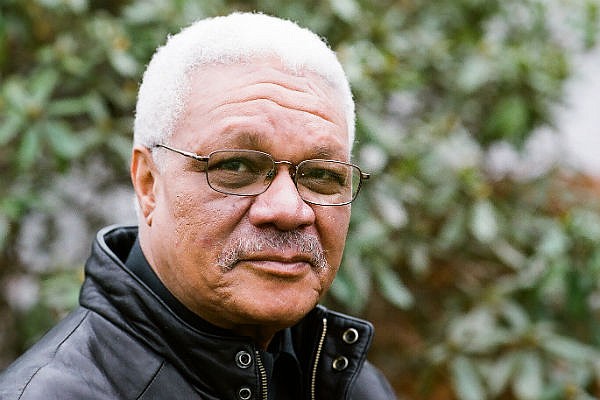
IMAGINE ME, not exactly one of our favorite sons, pulling up as usual on the San Diego bus via San Ysidro to that little wire fence where a brown-shirted cop on the U.S. side once told me that he had never, in fifteen years of working that post, been across the border to Mexico — which to him was one big Tijuana — and never would. That was in the very early Sixties. He made me and Bob Mates, my travel companion at the time, produce what Bob called “I.D. up the kazoo” to prove we hadn’t been in jail and weren’t secret gangsters, part of the kiddy underworld.
Now it’s three years later, 1965....
This time I get off the bus just when it’s turning dark. There isn’t anyone guarding anything at the border, so I’m free to walk across like the proverbial human being....
I behold the smoking taxi driver that a little boy leads me to in the drizzling night. This driver, he don’t say nothing when I climb into his cab, not until we shoot out from customs and down the block toward the bus station; then suddenly he breaks into that local lingo, the Tijuanese, yakking all about how things’ve been, cha-cha-cha, and quien sabe? and po siiii and gringuistas and who knows what all? Having at first taken me to be a true Latino of some kind, he’s made to realize by my muffled replies in Spanish that either (a) I’ve been out of practice speaking the language for some time now, or (b) — and more probably — that I must be that occasional gringo negro who slips across the border, usually from the San Diego Naval Yard to either get high or get laid....
Al Young Bodies & Soul 1981
"I FELL IN LOVE with the girl who did my makeup,” Ferguson says.
Lisa nods politely as her eyes come to rest, not on Ferguson, but on the camouflaged backside of her partner. “And what ever happened to her?” asks Lisa.
He had married her of course.
Twenty-two years ago, Sheila powdered his hair and added fifty years to his face with a brown pencil. Eyes closed, stomach jittery with mild stage fright, Sheila’s fingers playing over his face, he had been aware of a tautness in his chest, a tug, a sense of being pulled abruptly in an unfamiliar direction.
He had made love to Sheila after the cast party that followed the final performance of the play. His first time. Sheila, he wasn’t sure about. She hadn’t intended to let things go as far as they did and had turned pissy afterwards. As she pulled her clothes back on, she asked him angrily if it was as good as he thought it would be. He told her it was. But when they were both dressed and had brushed the grass off their clothes and were walking back to the car, he remembered, with a pang, something he had seen the previous summer.
He had taken the bus as far west as San Diego, where he spent several afternoons on a nude beach, smoking hashish-loaded cigarettes and watching the hang gliders float down from the cliffs above. He stood in waist-high water and watched a glider spiraling towards him. The pilot was a woman. She wore a powder-blue helmet and nothing else. For a few seconds, their eyes met, and he had the feeling that if he could hold her gaze he would be able to see the world as she was seeing it at that moment — the cliffs, the sand, the water. Then an updraft caught the glider and it disappeared in the glare of the midday sun.
Les Myers “The Kite” Prize Stories: 1992 O. Henry Awards
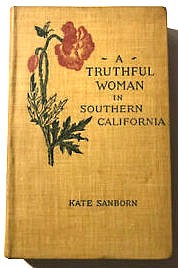
ONE OF THE FAVORITE DRIVES is into the Monte. This is a large park or tract of a thousand acres. On each side the hills rise, and in front El Cajon shows new beauties with every step of the way. Great live oaks with enormous trunks, ancient sycamores, elder, and willows make in some spots a dense shade.
On the edge of the hillsides the Flume may be seen, which furnishes many ranches as well as the city of San Diego with the purest mountain water. Underneath the trees and up on the rocks the lover of flowers and ferns will scramble. There are the dainty forget-me-nots, tiny flowers of starry white, flowers of pale orange with centres of deep maroon, the wild galliardia, and the wild peony with its variegated leaves. Many other delicate blossoms which we cannot stop to describe are there too.
And the ferns! All kinds may be found by the initiated, and many are close at hand. The fern lined with gold or with silver, the running ferns, the ferns of lace-like fineness, the ferns as soft as velvet, all growing in the greatest profusion. And each day of the week a different drive and new delights.
There is the valley of El Cajon (“the box”), which should be visited in grapepicking time. The great Boston ranch alone employs three hundred twenty-five pickers. Men, women, children, all busy, and the grapes when just turned are sweet, spicy, and delicious, making the air fragrant. This valley is dotted with handsome villas and prosperous ranches. The range of mountains which looms up before us from the veranda of the hotel is not yet dignified by a name, yet it is more imposing than the White Mountains, and in the distance we see old Cuya-maca, nearly seven thousand feet high.
Kate Sanborn A Truthful Woman in Southern California 1893
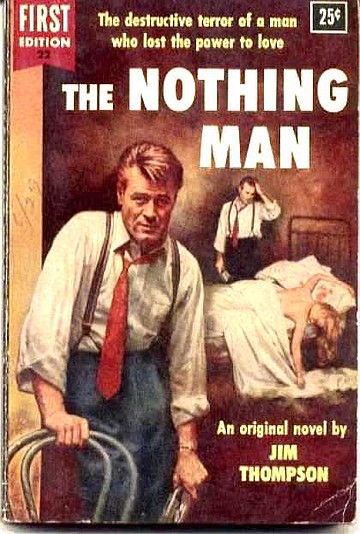
THE CHIEF OF POLICE led me over to the wall, stabbed a shaky finger at a framed map of Baja California. The finger weaved, slid, and came to a stop at a point near the Mexico-California border.
“Here is — hie — is how you say, pen — pen-in —?” “Peninsula.”
“Yes. Pen-in — well, you see eet, yes? How way out here eet come? Yes. And here is teep of island. And here ... what you say is here, Cleent?”
“Something never to be taken internally,” I said. “An insipid beverage, somewhat salty in this instance —”
“Ha, ha. Is water, you say, yes? You be wrong, Cleent. Poquita, si. Two, three inches, yes, but no more. Underneath is beeg — how you say? — reef. Rock. Like pavement.”
“You’re joking,” I said. “You mean to tell me you can drive a car from here to here?”
“Si. Many time I have. Many peoples they do. Like I say, is rock. Muy bueno camino — ver’ fine road.”
Jim Thompson The Nothing Man 1982
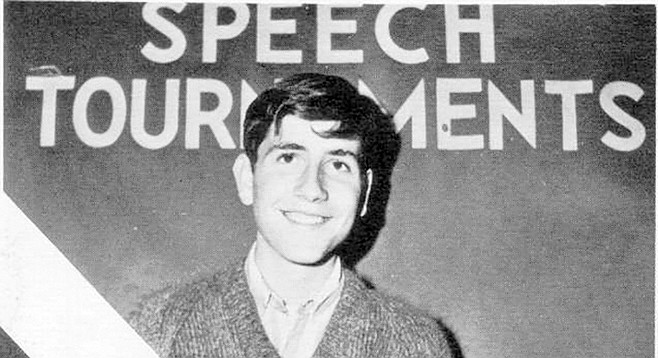
LESTER BANGS WAS AS IMPORTANT and influential a rock critic as John Lennon was a rock & roll musician. This is not a claim made lightly.
Bangs’ first published work, a negative review of the MC5’s Kick Out the Jams, appeared in Rolling Stone in the spring of 1969. In 1971, he dropped out of college and moved from his home in the San Diego suburb of El Cajon, where he was known to have written on the walls of any available room when he ran out of paper, to Detroit, where he solidified his reputation in the pages and off the walls of Creem.
Paul Nelson “Lester Bangs: 1948-1982” Rolling Stone June 10,1982
PAT ROBERTSON'S CHRISTIAN COALITION has created a disturbing and effective strategy called the San Diego model: Elect right-wing candidates to low-level political jobs — the offices typically out of the spotlight at election time — then use those offices to further a Christian agenda.
In the 1990 local elections, a coalition of Christian and pro-life groups in San Diego County, California, achieved stunning success. Under the aegis of the Pro-Life Council, the coalition endorsed 90 candidates or agencies such as community planning districts, water cards, fire protection districts, school boards and city councils. It called its slate of endorsees the Pro-Family Candidate List. Sixty candidates, many of them political novices with no experience or qualifications for the offices, won. Their only real qualification for endorsement? A strong pro-life stance.
The 1990 election had the effect of a quiet coup because mainstream voters were unaware of the Pro-Life Council strategy. The Pro-Family Candidate List circulated among conservative churches. Phone volunteers from various Christian organizations canvassed directly from church directories. Many of the candidates declined to speak to the press or to appear at public forums. It wasn’t necessary — the right people knew whom to vote for, and in low-turnout elections, a mobilized force carried the day....
In La Mesa, new school trustee Don Smith announced a self-described religious agenda for the La Mesa-Spring Valley School District: “We want to have it like it was a hundred years ago, when God, the Ten Commandments and prayer were the focus of our schools and where morality was taught.”
One of the masterminds of the San Diego strategy was political consultant and Christian activist Steve Baldwin....
Baldwin has no problem with running people on their religious faith rather than on their qualifications. “I don’t think any board is so complicated you can’t learn it in six months,” he told The San Diego Union....
The other side’s best advocate is the Mainstream Voters Project....
[Its president, Rita] Collier says that “Christian right-wing conservatives” have pledged to field candidates for 200 San Diego County elective offices in November. Her group has published a list of such potential candidates who attended a Christian Coalition training session....
Smith, the La Mesa school trustee ..., is also the San Diego County co-chairman of the Christian Coalition. Smith sees no conflict in instilling these [aforementioned] elements in the school curriculum, since he feels that the separation of church and state is simply a “myth” created by the Supreme Court.
Bob Howells “The Myth of Church and State” Playboy October 1992

DEVON GOT OUT OF BED and went over to the window to pull aside the drapes. She had long since moved out of the bedroom she’d shared with Robert into the smallest room on the second floor of the ranch house. Small rooms were less lonely, easier to fill. This one, which faced south, had a sweeping view of the river valley, and in the distance the parched hills of Tijuana with its wooden shacks and its domed cathedral the same color as the mustard they sold for hot dogs at the race track and the bull ring. Tijuana looked best at night when it became a cluster of starry lights on the horizon, or at dawn when the cathedral dome turned pink and the shacks were still hidden by darkness....
South of Boca de Rio the road met the main highway that connected San Diego and Tijuana. The two cities, so dissimilar in sight and sound and atmosphere, were bound together by geography and economics, like stepsisters with completely different backgrounds forced to live together under the same roof....
Leo Bishop drove in the slow lane, both hands so tight on the steering wheel that his knuckle bones seemed ready to force their way out of his skin. He was a tall thin man in his early forties. There was about him an air of defeat and bewilderment, as though all the rules he’d learned in life were, one by one, being reversed....
The road had turned west toward San Diego Bay. Sailboats moved gently in the water like large white butterflies that had dipped down to drink. At the edge of the bay a thin strand of beach, wet from the ebbing tide and silvered by the sun, held back the open sea.
“You’d better let me off half a block or so from the courthouse,” Devon said. “Mrs. Osborne thinks we shouldn’t be seen together.” “Why?”
“People might talk.” “Would that matter?”
“It would to her.”
They drove for a while without speaking. In the bay the sailboats gave way to navy vessels, the white butterflies to gray steel waterbugs with ferocious-looking antennae and weird superstructures.
Margaret Millar Beyond This Point Are Monsters 1970
The Reader will pay $10 for submissions to "Out of Context" that are selected for publication. Choices must be drawn from books or out-of-town periodicals. Include author, title, date of publication, and your phone number. Send to "Out of Context," 2323 Broadway, San Diego, CA 92102


DESPITE LEGAL RESTRICTIONS or bans in all states but Arizona, Oklahoma, New Mexico, and Louisiana, cockfighting “has never been bigger,” according to HSUS [Humane Society of the United States] investigator Eric Sakach. An estimated 1,000 people breed fighting cocks in San Diego County, Calif., alone.
“News Shorts” The Animals' Agenda May 1991

THE LIGHT HURRIED ACROSS the town and Glen Collins saw the spreading Pacific Ocean, the sailing ships in the port.
He took a deep breath and stretched the morning’s chill from his muscles. San Diego would be a great city someday. And maybe, if he won the election and became its first sheriff, he could do his part to see that it became the kind of place where folks would stay and raise their families with pride. It would never be a rip-roaring railhead city like Dodge or Abilene. He’d seen those places and they offered no appeal. Those towns would blossom and die before they’d even lived. But here it was different; San Diego was already a hundred years old and founded by Junipero Serra as the Mother Mission of California — San Diego de Alcala. It had grown very slowly, but now, after a century, what was left was good and Collins knew that it was here he would plant his roots....
And now, only a month before the election, Hap was teaching him how to handle a six-gun. Getting elected was going to be easier than staying alive. San Diego wasn’t Wichita or Dodge City, but there were gunfights and a sheriff had to be fast or dead.
Gary McCarthy The First Sheriff 1979
IT IS AN EXTRAORDINARY ENVIRONMENT that [San Diego Mayor Maureen O’Connor] married into 15 years ago. Her husband, [Robert O. Peterson,] founder of the Jack-in-the-Box fast-food franchise, is 30 years her senior. In the late 1960s, before he was married to O’Connor, Peterson went to [San Diego architect Russell] Forester and asked him to build a Japanese-style house on a Point Loma property [Peterson] had acquired a few years earlier. “I’d done hundreds of Jack-in-the-Boxes,” Forester recalls, “but nothing like this house. Peterson really designed it himself.”
The construction of interconnected pavilions for cooking, dining, reading, guests, lounging and sleeping took years; the parts were assembled with such precision that “they look like they were made by cabinetmakers,” says San Diego landscape architect Kenneth Kengo Hayashi, who was asked to design the garden when the house next-door came up for sale and Peterson purchased it for the land.
He leveled that house and, with the help of Hayashi, created a completely secluded oasis. Gigantic boulders were brought in, then carefully placed in the landscape by a huge crane. Mature trees were placed around the periphery. Everything was done under Peterson’s direction. “We even had the koi flown in from Japan,” he says. “Two hundred carp were sent by air in plastic bags filled with water. When they arrived in Los Angeles, the bags were injected with oxygen. After we got them to San Diego, we gently lowered them into the pond to release the fish. We lost only two.”...
The [house's] interior, serene, elegant and austere, was designed by Jack Lenor Larsen, the renowned New York creator of luxury textiles and furniture. “It’s a Jack Lenor Larsen museum,” says the mayor, who often wears similarly elegant and austere gray Yves Saint Laurent pantsuits....
While most of the corridors between pavilions have glass walls, to bring the garden indoors, rooms are paneled in whitewashed teak. Couches are upholstered in Larsen’s Siam spun silk. The classic Jules Lelou Art Deco club chairs are covered with his buttery leather. In the dining room, Larsen used Wholly Cow woven leather for his Legatto dining room chairs. Walls are appropriately covered with a lightweight fabric he calls Whispers, the hall with a wool carpet named Syncopation...
O'Connor draws strength from her home, a place where she can spend unhurried time with her husband, think and read. (Not long ago, her night table was stacked with Daniel Yergin’s The Prize, Umberto Eco’s Foucault's Pendulum, Bernhard Anderson’s Understanding the Old Testament and the Bible). This tranquil space is the ideal antidote to City Hall, where each day the idealistic mayor brings the same dedication to “fight the big fights — the things that take the most energy out of me, because I have to fight the world for my city.”
Wendy Lyon Moonan “Safe Harbor” Town & Country May 1992

IMAGINE ME, not exactly one of our favorite sons, pulling up as usual on the San Diego bus via San Ysidro to that little wire fence where a brown-shirted cop on the U.S. side once told me that he had never, in fifteen years of working that post, been across the border to Mexico — which to him was one big Tijuana — and never would. That was in the very early Sixties. He made me and Bob Mates, my travel companion at the time, produce what Bob called “I.D. up the kazoo” to prove we hadn’t been in jail and weren’t secret gangsters, part of the kiddy underworld.
Now it’s three years later, 1965....
This time I get off the bus just when it’s turning dark. There isn’t anyone guarding anything at the border, so I’m free to walk across like the proverbial human being....
I behold the smoking taxi driver that a little boy leads me to in the drizzling night. This driver, he don’t say nothing when I climb into his cab, not until we shoot out from customs and down the block toward the bus station; then suddenly he breaks into that local lingo, the Tijuanese, yakking all about how things’ve been, cha-cha-cha, and quien sabe? and po siiii and gringuistas and who knows what all? Having at first taken me to be a true Latino of some kind, he’s made to realize by my muffled replies in Spanish that either (a) I’ve been out of practice speaking the language for some time now, or (b) — and more probably — that I must be that occasional gringo negro who slips across the border, usually from the San Diego Naval Yard to either get high or get laid....
Al Young Bodies & Soul 1981
"I FELL IN LOVE with the girl who did my makeup,” Ferguson says.
Lisa nods politely as her eyes come to rest, not on Ferguson, but on the camouflaged backside of her partner. “And what ever happened to her?” asks Lisa.
He had married her of course.
Twenty-two years ago, Sheila powdered his hair and added fifty years to his face with a brown pencil. Eyes closed, stomach jittery with mild stage fright, Sheila’s fingers playing over his face, he had been aware of a tautness in his chest, a tug, a sense of being pulled abruptly in an unfamiliar direction.
He had made love to Sheila after the cast party that followed the final performance of the play. His first time. Sheila, he wasn’t sure about. She hadn’t intended to let things go as far as they did and had turned pissy afterwards. As she pulled her clothes back on, she asked him angrily if it was as good as he thought it would be. He told her it was. But when they were both dressed and had brushed the grass off their clothes and were walking back to the car, he remembered, with a pang, something he had seen the previous summer.
He had taken the bus as far west as San Diego, where he spent several afternoons on a nude beach, smoking hashish-loaded cigarettes and watching the hang gliders float down from the cliffs above. He stood in waist-high water and watched a glider spiraling towards him. The pilot was a woman. She wore a powder-blue helmet and nothing else. For a few seconds, their eyes met, and he had the feeling that if he could hold her gaze he would be able to see the world as she was seeing it at that moment — the cliffs, the sand, the water. Then an updraft caught the glider and it disappeared in the glare of the midday sun.
Les Myers “The Kite” Prize Stories: 1992 O. Henry Awards

ONE OF THE FAVORITE DRIVES is into the Monte. This is a large park or tract of a thousand acres. On each side the hills rise, and in front El Cajon shows new beauties with every step of the way. Great live oaks with enormous trunks, ancient sycamores, elder, and willows make in some spots a dense shade.
On the edge of the hillsides the Flume may be seen, which furnishes many ranches as well as the city of San Diego with the purest mountain water. Underneath the trees and up on the rocks the lover of flowers and ferns will scramble. There are the dainty forget-me-nots, tiny flowers of starry white, flowers of pale orange with centres of deep maroon, the wild galliardia, and the wild peony with its variegated leaves. Many other delicate blossoms which we cannot stop to describe are there too.
And the ferns! All kinds may be found by the initiated, and many are close at hand. The fern lined with gold or with silver, the running ferns, the ferns of lace-like fineness, the ferns as soft as velvet, all growing in the greatest profusion. And each day of the week a different drive and new delights.
There is the valley of El Cajon (“the box”), which should be visited in grapepicking time. The great Boston ranch alone employs three hundred twenty-five pickers. Men, women, children, all busy, and the grapes when just turned are sweet, spicy, and delicious, making the air fragrant. This valley is dotted with handsome villas and prosperous ranches. The range of mountains which looms up before us from the veranda of the hotel is not yet dignified by a name, yet it is more imposing than the White Mountains, and in the distance we see old Cuya-maca, nearly seven thousand feet high.
Kate Sanborn A Truthful Woman in Southern California 1893

THE CHIEF OF POLICE led me over to the wall, stabbed a shaky finger at a framed map of Baja California. The finger weaved, slid, and came to a stop at a point near the Mexico-California border.
“Here is — hie — is how you say, pen — pen-in —?” “Peninsula.”
“Yes. Pen-in — well, you see eet, yes? How way out here eet come? Yes. And here is teep of island. And here ... what you say is here, Cleent?”
“Something never to be taken internally,” I said. “An insipid beverage, somewhat salty in this instance —”
“Ha, ha. Is water, you say, yes? You be wrong, Cleent. Poquita, si. Two, three inches, yes, but no more. Underneath is beeg — how you say? — reef. Rock. Like pavement.”
“You’re joking,” I said. “You mean to tell me you can drive a car from here to here?”
“Si. Many time I have. Many peoples they do. Like I say, is rock. Muy bueno camino — ver’ fine road.”
Jim Thompson The Nothing Man 1982

LESTER BANGS WAS AS IMPORTANT and influential a rock critic as John Lennon was a rock & roll musician. This is not a claim made lightly.
Bangs’ first published work, a negative review of the MC5’s Kick Out the Jams, appeared in Rolling Stone in the spring of 1969. In 1971, he dropped out of college and moved from his home in the San Diego suburb of El Cajon, where he was known to have written on the walls of any available room when he ran out of paper, to Detroit, where he solidified his reputation in the pages and off the walls of Creem.
Paul Nelson “Lester Bangs: 1948-1982” Rolling Stone June 10,1982
PAT ROBERTSON'S CHRISTIAN COALITION has created a disturbing and effective strategy called the San Diego model: Elect right-wing candidates to low-level political jobs — the offices typically out of the spotlight at election time — then use those offices to further a Christian agenda.
In the 1990 local elections, a coalition of Christian and pro-life groups in San Diego County, California, achieved stunning success. Under the aegis of the Pro-Life Council, the coalition endorsed 90 candidates or agencies such as community planning districts, water cards, fire protection districts, school boards and city councils. It called its slate of endorsees the Pro-Family Candidate List. Sixty candidates, many of them political novices with no experience or qualifications for the offices, won. Their only real qualification for endorsement? A strong pro-life stance.
The 1990 election had the effect of a quiet coup because mainstream voters were unaware of the Pro-Life Council strategy. The Pro-Family Candidate List circulated among conservative churches. Phone volunteers from various Christian organizations canvassed directly from church directories. Many of the candidates declined to speak to the press or to appear at public forums. It wasn’t necessary — the right people knew whom to vote for, and in low-turnout elections, a mobilized force carried the day....
In La Mesa, new school trustee Don Smith announced a self-described religious agenda for the La Mesa-Spring Valley School District: “We want to have it like it was a hundred years ago, when God, the Ten Commandments and prayer were the focus of our schools and where morality was taught.”
One of the masterminds of the San Diego strategy was political consultant and Christian activist Steve Baldwin....
Baldwin has no problem with running people on their religious faith rather than on their qualifications. “I don’t think any board is so complicated you can’t learn it in six months,” he told The San Diego Union....
The other side’s best advocate is the Mainstream Voters Project....
[Its president, Rita] Collier says that “Christian right-wing conservatives” have pledged to field candidates for 200 San Diego County elective offices in November. Her group has published a list of such potential candidates who attended a Christian Coalition training session....
Smith, the La Mesa school trustee ..., is also the San Diego County co-chairman of the Christian Coalition. Smith sees no conflict in instilling these [aforementioned] elements in the school curriculum, since he feels that the separation of church and state is simply a “myth” created by the Supreme Court.
Bob Howells “The Myth of Church and State” Playboy October 1992

DEVON GOT OUT OF BED and went over to the window to pull aside the drapes. She had long since moved out of the bedroom she’d shared with Robert into the smallest room on the second floor of the ranch house. Small rooms were less lonely, easier to fill. This one, which faced south, had a sweeping view of the river valley, and in the distance the parched hills of Tijuana with its wooden shacks and its domed cathedral the same color as the mustard they sold for hot dogs at the race track and the bull ring. Tijuana looked best at night when it became a cluster of starry lights on the horizon, or at dawn when the cathedral dome turned pink and the shacks were still hidden by darkness....
South of Boca de Rio the road met the main highway that connected San Diego and Tijuana. The two cities, so dissimilar in sight and sound and atmosphere, were bound together by geography and economics, like stepsisters with completely different backgrounds forced to live together under the same roof....
Leo Bishop drove in the slow lane, both hands so tight on the steering wheel that his knuckle bones seemed ready to force their way out of his skin. He was a tall thin man in his early forties. There was about him an air of defeat and bewilderment, as though all the rules he’d learned in life were, one by one, being reversed....
The road had turned west toward San Diego Bay. Sailboats moved gently in the water like large white butterflies that had dipped down to drink. At the edge of the bay a thin strand of beach, wet from the ebbing tide and silvered by the sun, held back the open sea.
“You’d better let me off half a block or so from the courthouse,” Devon said. “Mrs. Osborne thinks we shouldn’t be seen together.” “Why?”
“People might talk.” “Would that matter?”
“It would to her.”
They drove for a while without speaking. In the bay the sailboats gave way to navy vessels, the white butterflies to gray steel waterbugs with ferocious-looking antennae and weird superstructures.
Margaret Millar Beyond This Point Are Monsters 1970
The Reader will pay $10 for submissions to "Out of Context" that are selected for publication. Choices must be drawn from books or out-of-town periodicals. Include author, title, date of publication, and your phone number. Send to "Out of Context," 2323 Broadway, San Diego, CA 92102
Comments